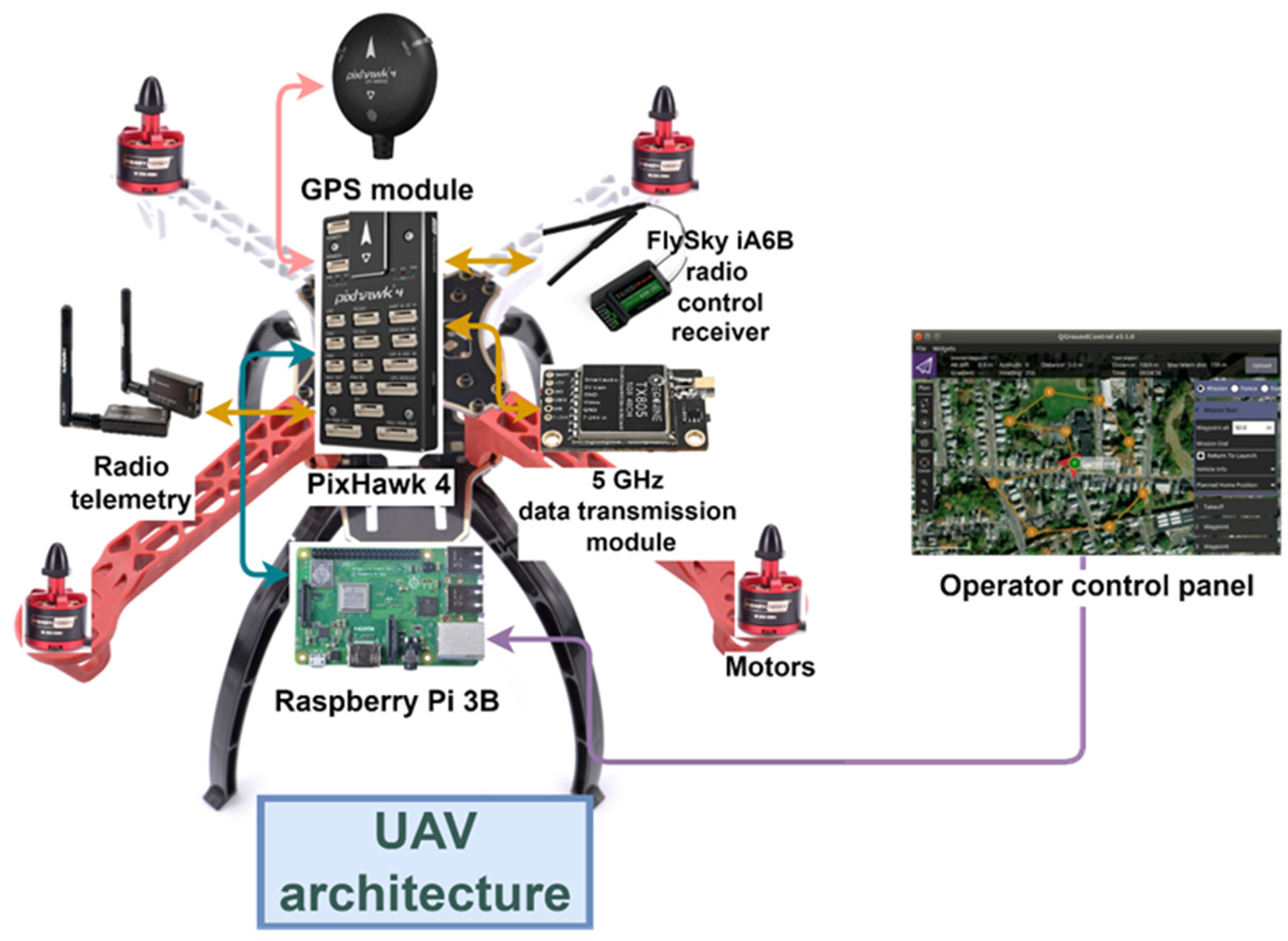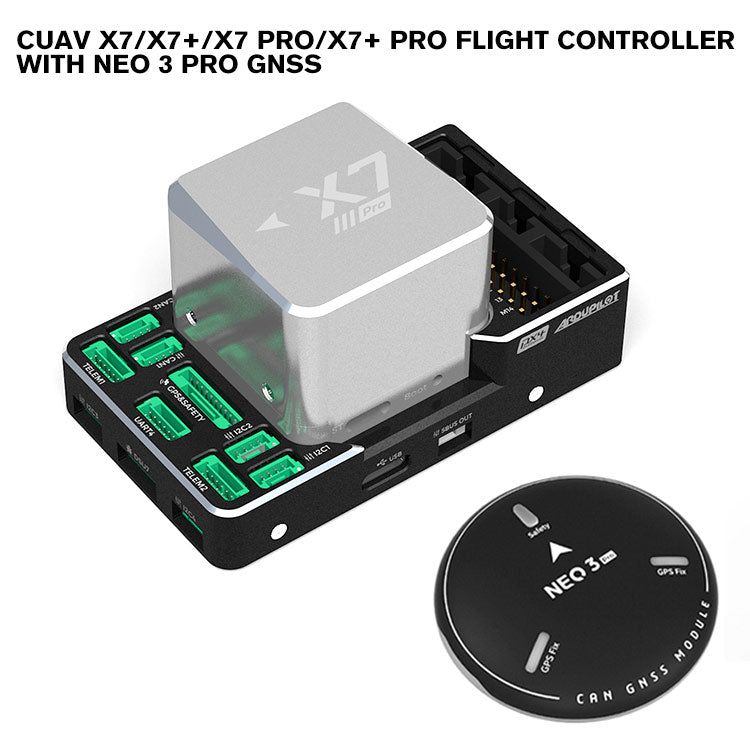Dependable Drone Navigation with SparkNavi Drone Flight Controller and GNSS/INS Made in Taiwan
Dependable Drone Navigation with SparkNavi Drone Flight Controller and GNSS/INS Made in Taiwan
Blog Article
Exploring the Function of Drone Trip Controllers in Enhancing Flight Stability and Navigating Performance
The development of drone modern technology has considerably boosted the importance of flight controllers, which function as the brain of these aerial automobiles. By incorporating real-time data from a range of sensors, trip controllers boost trip stability and navigation effectiveness, making sure that drones can run efficiently also in complex atmospheres. This discussion will certainly check out the vital parts that contribute to these improvements, in addition to the ramifications for the future of self-governing trip. What technologies exist in advance that could further transform the abilities of drone trip controllers?

Comprehending Flight Controllers
Trip controllers are important components in the functioning of drones, acting as the brains that support and handle flight operations. These advanced gadgets process data from various sensors, including accelerometers, gyroscopes, and GPS, to ensure that the drone maintains its intended trip course. The trip controller analyzes this information and carries out commands based on pre-defined algorithms, enabling the drone to reply to ecological adjustments, such as wind or barriers.
The key feature of a flight controller is to maintain security throughout trip. It accomplishes this by making real-time adjustments to the drone's electric motors and control surface areas, making sure balance and control. Additionally, modern trip controllers integrate sophisticated features such as waypoint navigating, permitting automated trip paths and enhanced functional effectiveness.
Recognizing the architecture of trip controllers is essential for both enthusiasts and professionals. As innovation breakthroughs, flight controllers have actually become extra qualified and portable, incorporating artificial knowledge to improve decision-making processes and adjust to intricate flight scenarios.
Secret Elements of Flight Stability
Accomplishing optimum flight stability in drones depends on numerous key elements that function in performance to ensure regulated and smooth procedures. Central to this security is the trip controller itself, which processes data from different sensing units to keep the wanted trip attitude. This includes accelerometers and gyroscopes that measure movement and positioning, enabling real-time changes to the drone's position.
Another important part is the digital rate controllers (ESCs), which manage the power supplied to the electric motors. By carefully adjusting electric motor speeds in reaction to flight controller commands, ESCs aid preserve balance and counteract disruptions triggered by wind or unexpected motions.
Furthermore, the layout of the drone's frame plays a critical role in flight security. A well-structured structure decreases resonances and improves the general aerodynamic profile, adding to smoother flight characteristics. Ultimately, the assimilation of innovative algorithms within the flight controller aids in anticipating modifications, making sure a responsive and versatile flight experience.
Together, these parts form a natural system that enhances a drone's security, permitting accurate handling and enhanced efficiency in various trip conditions.
Navigating Performance Techniques
Effectiveness in navigation is essential for enhancing drone procedures, particularly in intricate atmospheres. Effective navigation methods improve the ability of drones to go across difficult surfaces and avoid challenges, thus enhancing operational effectiveness and security.
One popular method is the implementation of sophisticated GPS and inertial dimension devices (IMUs) that supply accurate location tracking and alignment information. These innovations enable drones to compute optimal trip courses in real-time, taking into consideration various elements such as wind problems and prospective challenges.
One more method involves the usage of formulas for path planning and optimization. Algorithms such as A * and Dijkstra's algorithm can be released to establish one of the check these guys out most efficient route while minimizing power consumption and flight time. In addition, incorporating maker learning models can allow drones to adaptively pick up from their atmospheres, enhancing navigating capacities via experience.

Influence on Autonomous Drones
The assimilation of advanced navigating methods has exceptionally transformed the capacities of independent drones, enabling them to run with better autonomy and precision. SparkNavi drone flight controller and GNSS/INS made in taiwan. These improvements are mostly associated to sophisticated flight controllers that make use of real-time data handling and sensor fusion, permitting drones to navigate complicated settings perfectly
The influence on autonomous drones extends beyond mere navigation; it incorporates improved barrier avoidance, improved security throughout vibrant conditions, and increased goal integrity. By leveraging formulas that include maker understanding and artificial knowledge, drones can adapt to altering scenarios, making educated decisions that optimize their trip courses while lessening dangers.
Furthermore, the application of durable flight controllers has actually promoted the implementation of complex tasks, such as aerial inspections, delivery services, and farming tracking, with very little human intervention. This capacity not only improves procedures yet likewise minimizes human error, consequently enhancing general safety and security.
As an outcome, the functional range of autonomous drones has actually increased dramatically, making them important tools in numerous sectors. Their capability to carry out effectively in diverse situations underscores the essential duty that advanced trip controllers play fit the future of unmanned aerial systems.
Future Trends in Trip Control
Frequently, developments in flight control innovation are positioned to redefine Check This Out the landscape of drone procedures in the coming years. Arising fads indicate a considerable change in the direction of improved expert system (AI) combination, making it possible for trip controllers to process real-time information extra efficiently. This development will help with improved decision-making capabilities, allowing drones to adjust to vibrant environmental conditions autonomously.
In addition, the implementation of equipment knowing algorithms is expected to improve anticipating maintenance, thus reducing downtime and prolonging the lifecycle of drone parts. This proactive technique to upkeep will be critical as drone applications broaden throughout various industries, from agriculture to logistics.

.jpg)
Last but not least, advancements in safe interaction protocols will certainly resolve security and governing issues, making sure that drones can run effortlessly in busy airspaces (SparkNavi drone flight controller and GNSS/INS made in taiwan). Jointly, these patterns point towards a future where trip control systems are not only smarter and more likewise capable however effective of operating securely in an increasingly integrated airspace
Verdict
Finally, drone flight controllers are important to enhancing trip stability and navigating performance through the sophisticated processing of sensor data. By keeping optimal flight attitudes and utilizing sophisticated algorithms for course optimization and barrier evasion, these controllers substantially contribute to the freedom and functional safety and security of drones. As modern technology proceeds to develop, additionally improvements in trip control systems are anticipated, assuring improved efficiency and increased capacities in the world of unmanned airborne automobiles.
By incorporating real-time data from a variety of sensing units, trip controllers boost trip security and navigation you can try here performance, making sure that drones can run efficiently also in complex atmospheres.Flight controllers are important components in the functioning of drones, offering as the minds that take care of and support flight operations. Additionally, modern trip controllers include sophisticated functions such as waypoint navigation, enabling for automated trip courses and improved functional effectiveness.
Central to this stability is the trip controller itself, which refines information from different sensors to maintain the preferred flight mindset.In final thought, drone flight controllers are integral to enhancing trip security and navigation performance with the advanced processing of sensing unit data.
Report this page